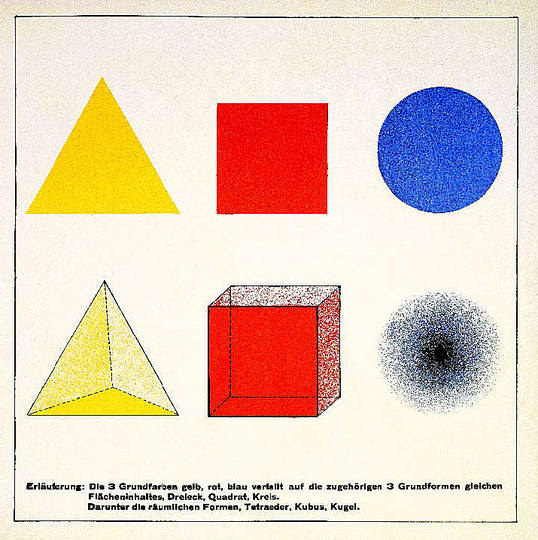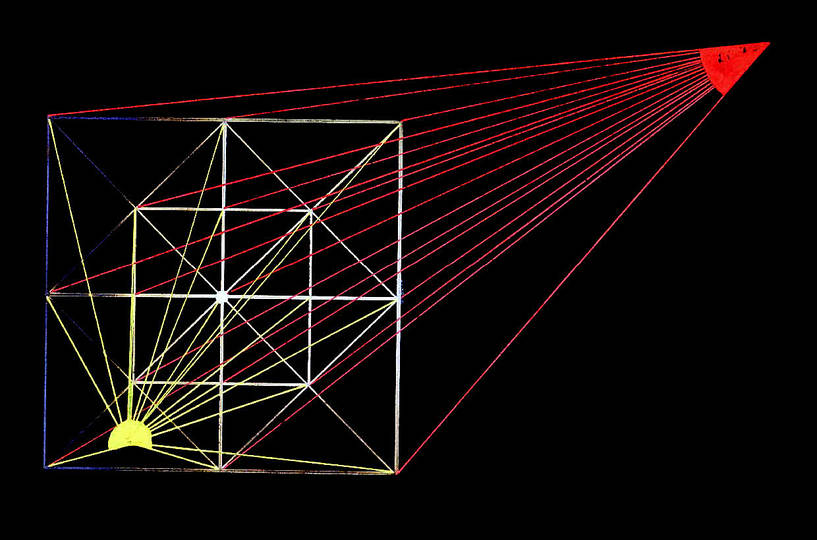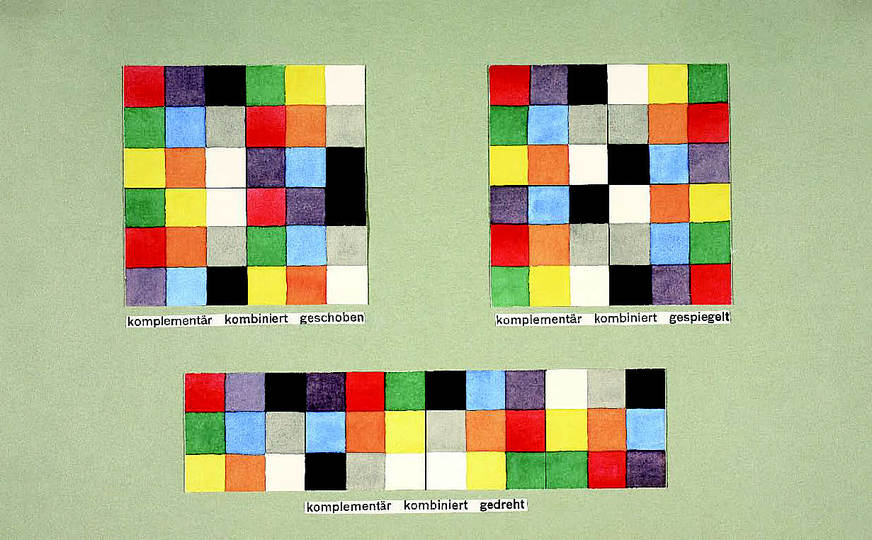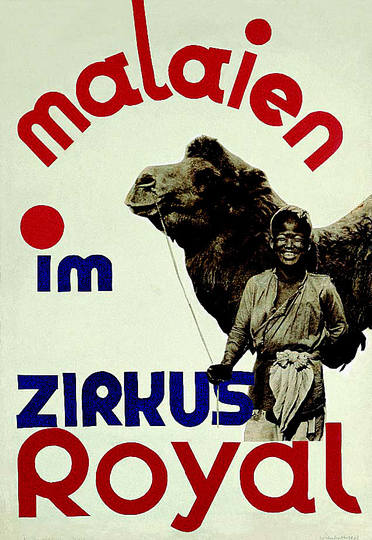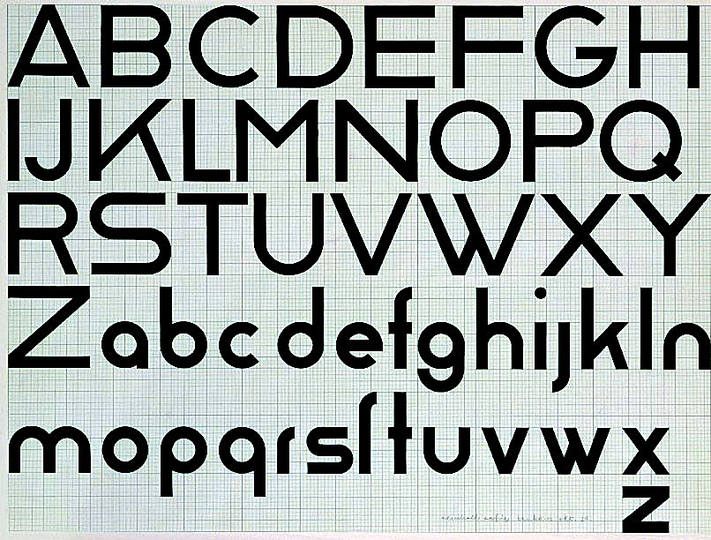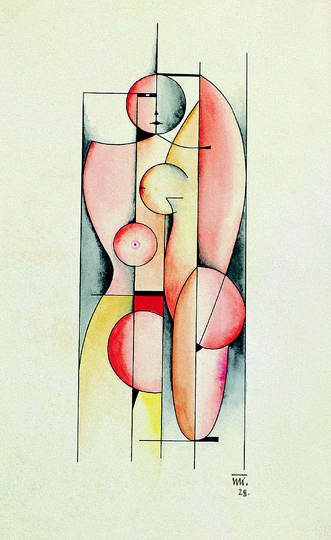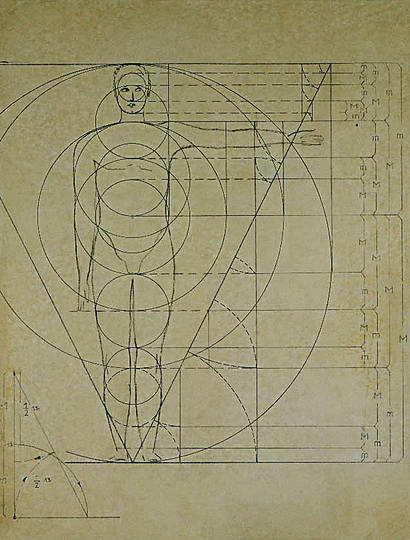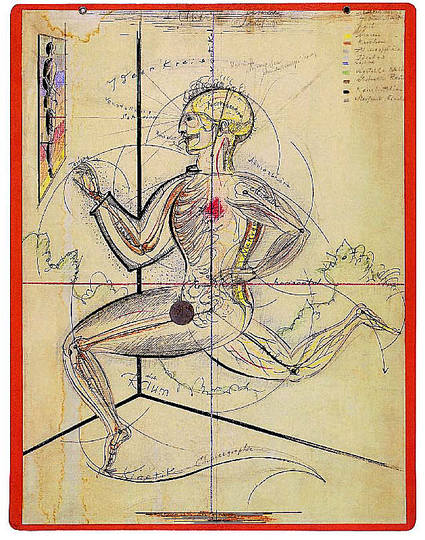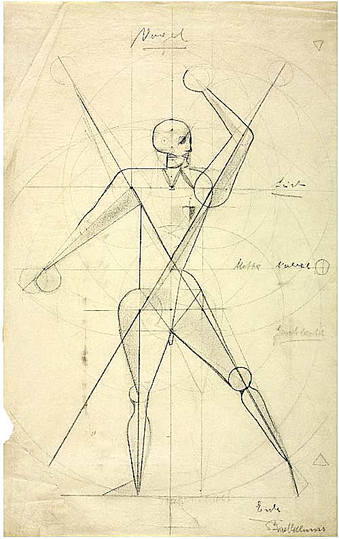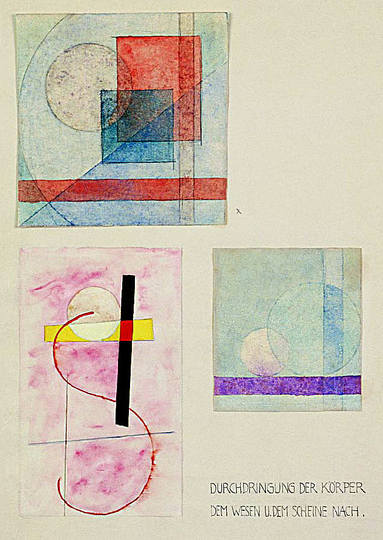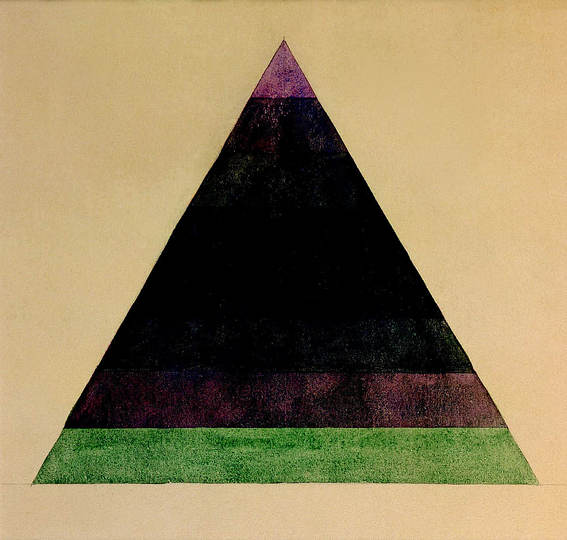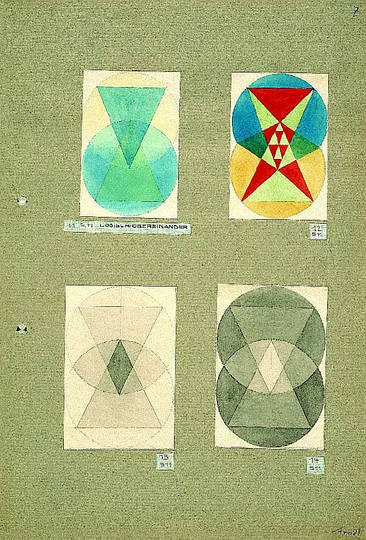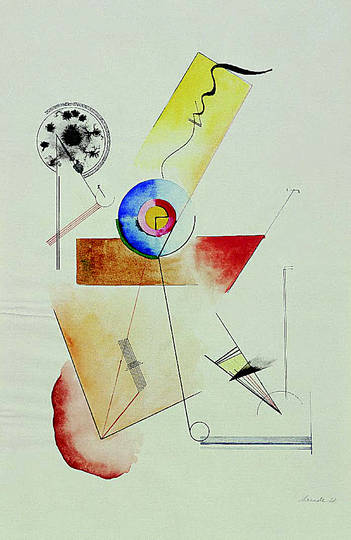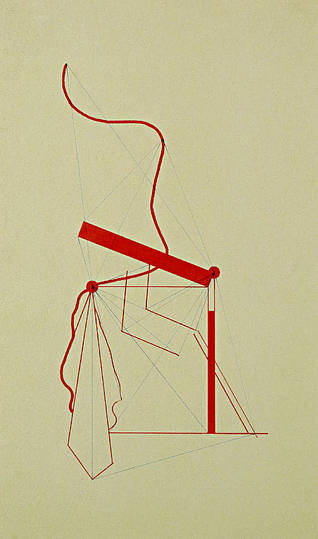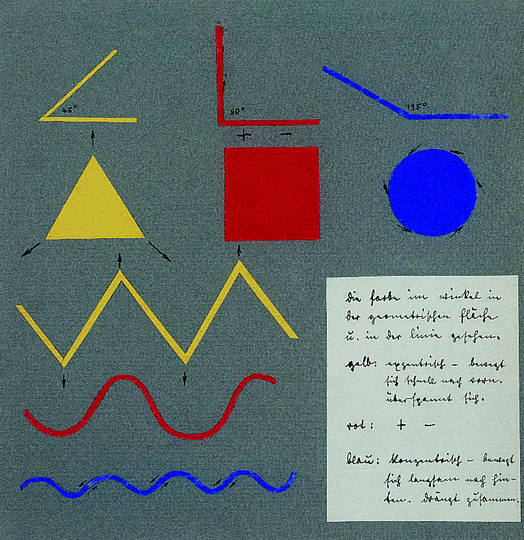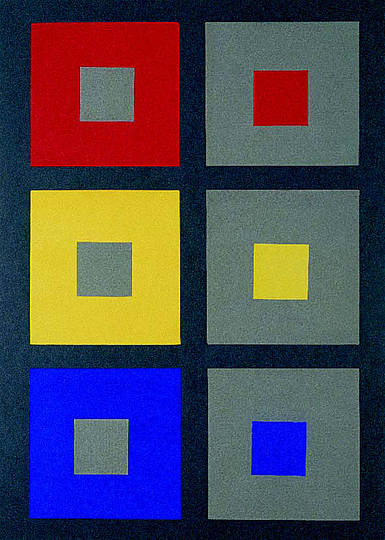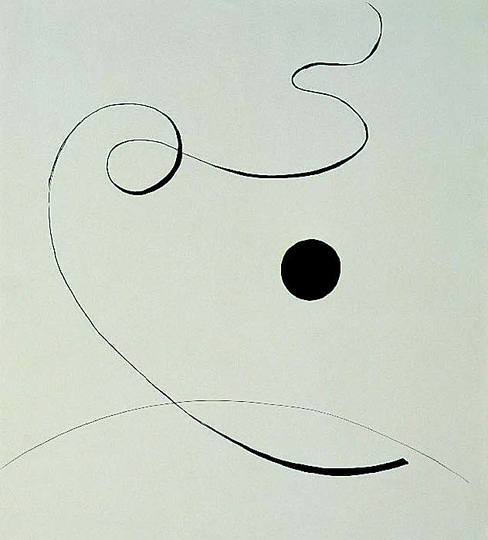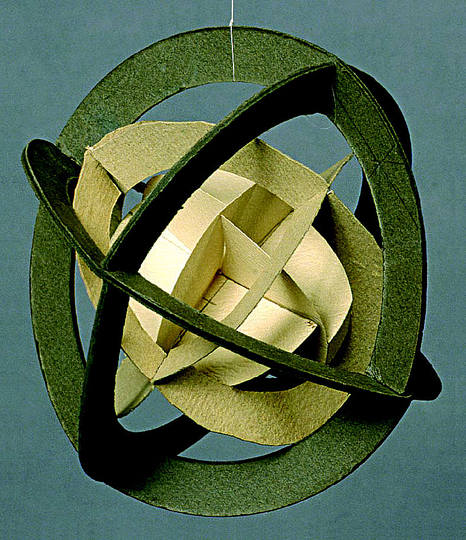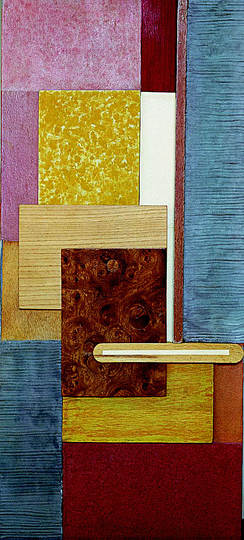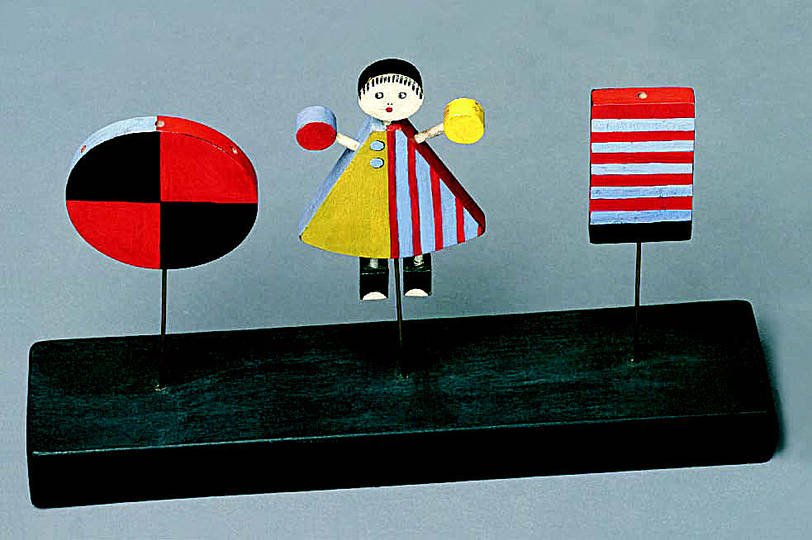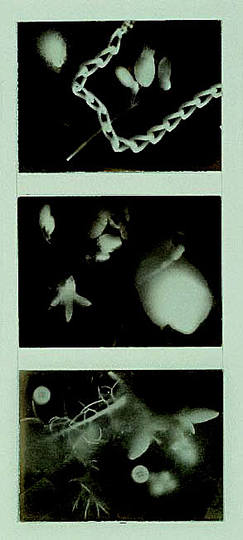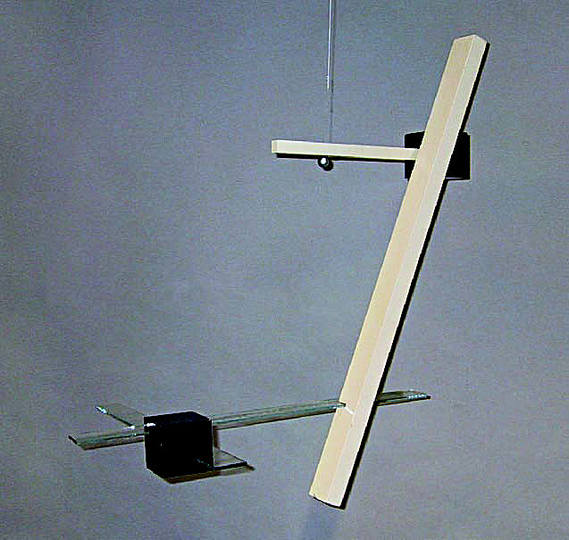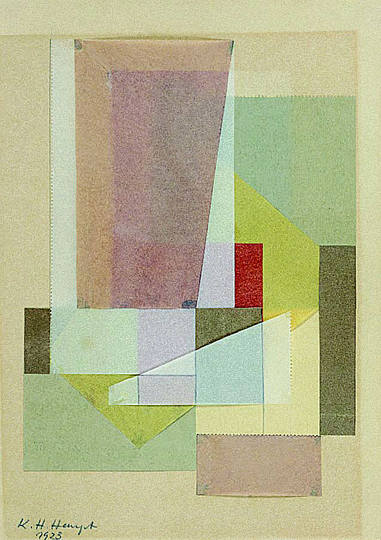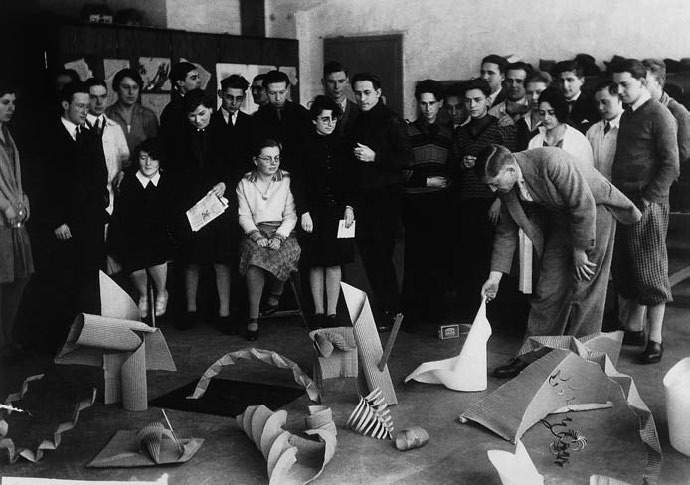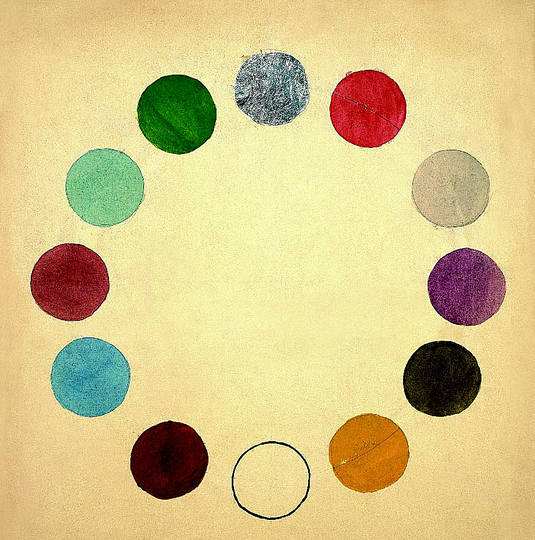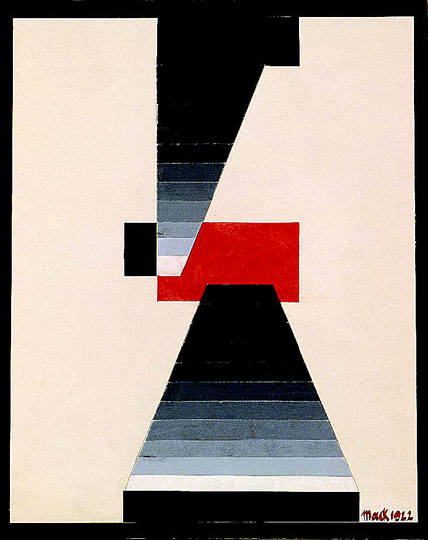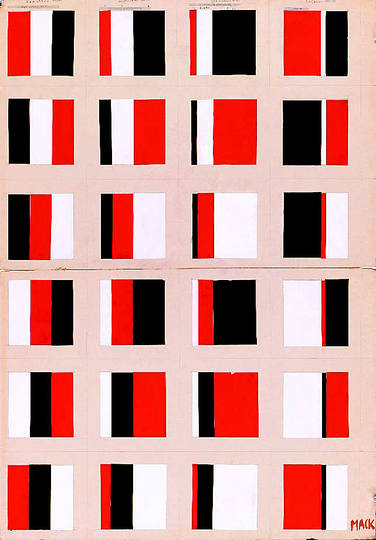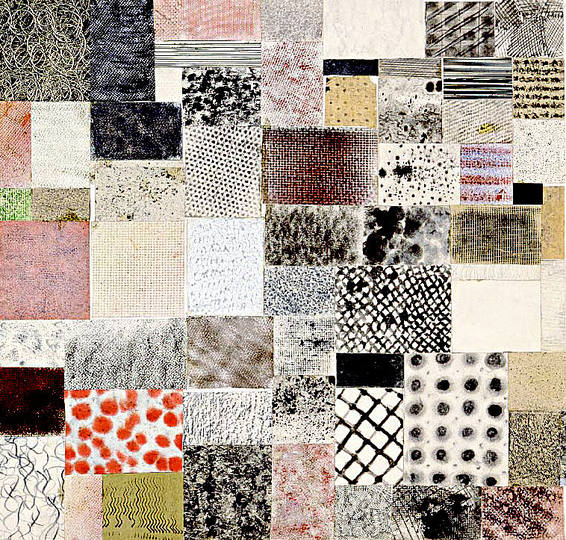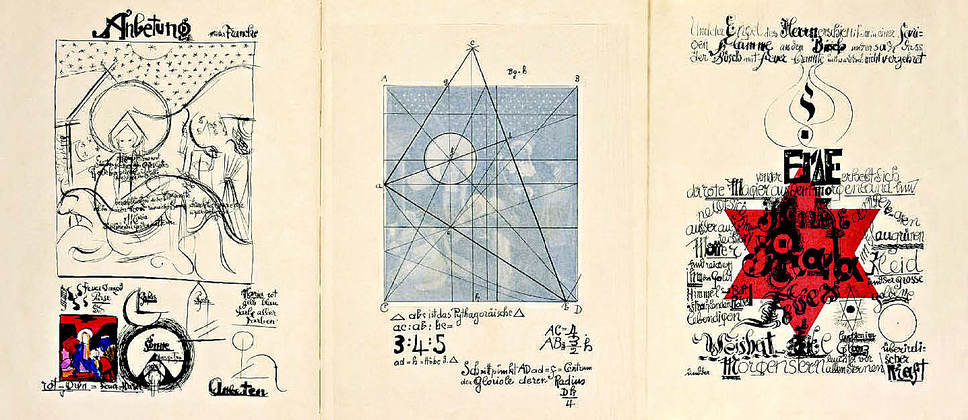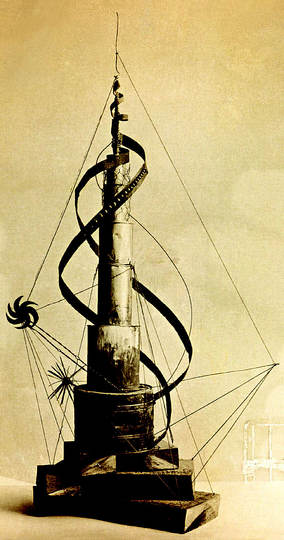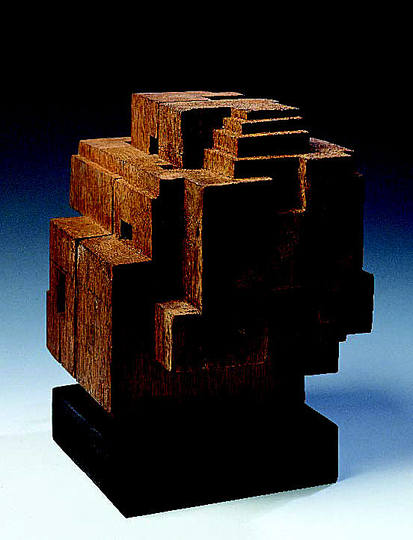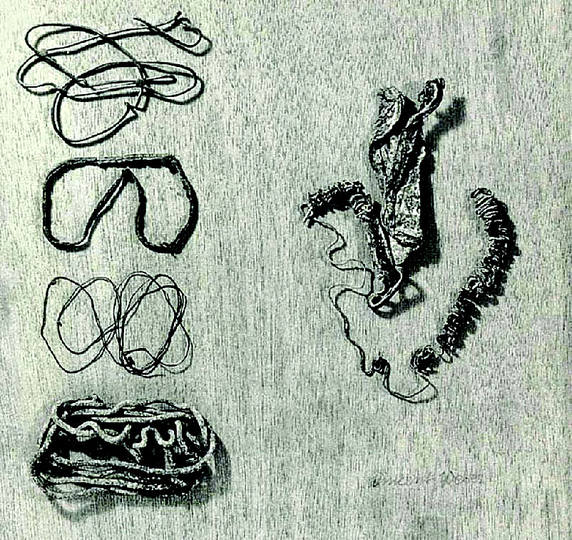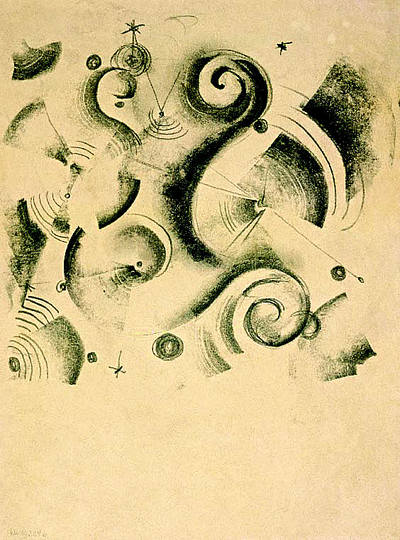Bauhaus: The Basic Course
The preparatory course was developed by Johannes Itten and continued by László Moholy-Nagy and Josef Albers. Those interested in the Bauhaus had the opportunity to test themselves in the preparatory course to see whether they had any aptitude as a designer. During this “self-finding course”, imagination and creativity were tested, as well as sensitivity, diligence, stamina and team work.
Johannes Itten set himself three goals for his preparatory course teaching:
1. To free the creative forces and thus the artistic talent of the students. Individual experience and insights were to lead to real work. The students were to free themselves step by step from all dead conventions and pluck up the courage to do their own work.
2. To make the students’ choice of profession easier. Materials and texture practise were a valuable aid in this. Every student found out after a short period of time which material attracted him, whether glass, wood, stone, clay, metal or spinning products, stimulating him to creative activity.
3. Students were to be taught the basic laws of artistic design for their later artistic professions. The laws of form and colour opened the world of the objective to the students. In the course of their work, objective and subjective form and colour problems could intermingle in various ways.
Wassily Kandinsky dedicated a great deal of attention to colour theory in his complex, theoretical instruction programme, which was also delivered in a decidedly “teacher-centred” manner.
In Dessau, Albers taught twelve lessons on four mornings during the first semester, and Moholy-Nagy taught four lessons per week in the second semester.
For Paul Klee, colour theory was part of his “Artistic Form Theory”, which he taught beginning in the 1921/1922 winter semester. Klee, who gave crucial support to the Bauhaus through his contributions to basic artistic theory, developed his teaching programme “Artistic Form Theory” into “Design Theory” in 1924 to react to the increasing scientific-technical-economic orientation of the later Bauhaus in Dessau, calling it “Artistic Design Theory.” In contrast to Kandinsky and Hirschfeld-Mack, Klee started from blue, yellow and red as the three basic colours and determined, by means of pendulum movements, their reach into the periphery of the colour circle in order to finally arrive at his “canon of colour totality” according to his process of analysis and synthesis. Klee’s colour theory was based on movement theory principles.
Joost Schmidt was different from his teacher colleagues at the Bauhaus in his tendency towards the authentic, the systematic, logical and factual as well as scientific laboratory work. Yet he always kept the “psychological whole” of man in his mind, man who he tried to localise in the range between “earthly” and “cosmic”, and as part of the “all-space” with the help of adequate, sometimes esoteric, life philosophies.
Johannes Itten set himself three goals for his preparatory course teaching:
1. To free the creative forces and thus the artistic talent of the students. Individual experience and insights were to lead to real work. The students were to free themselves step by step from all dead conventions and pluck up the courage to do their own work.
2. To make the students’ choice of profession easier. Materials and texture practise were a valuable aid in this. Every student found out after a short period of time which material attracted him, whether glass, wood, stone, clay, metal or spinning products, stimulating him to creative activity.
3. Students were to be taught the basic laws of artistic design for their later artistic professions. The laws of form and colour opened the world of the objective to the students. In the course of their work, objective and subjective form and colour problems could intermingle in various ways.
Wassily Kandinsky dedicated a great deal of attention to colour theory in his complex, theoretical instruction programme, which was also delivered in a decidedly “teacher-centred” manner.
In Dessau, Albers taught twelve lessons on four mornings during the first semester, and Moholy-Nagy taught four lessons per week in the second semester.
For Paul Klee, colour theory was part of his “Artistic Form Theory”, which he taught beginning in the 1921/1922 winter semester. Klee, who gave crucial support to the Bauhaus through his contributions to basic artistic theory, developed his teaching programme “Artistic Form Theory” into “Design Theory” in 1924 to react to the increasing scientific-technical-economic orientation of the later Bauhaus in Dessau, calling it “Artistic Design Theory.” In contrast to Kandinsky and Hirschfeld-Mack, Klee started from blue, yellow and red as the three basic colours and determined, by means of pendulum movements, their reach into the periphery of the colour circle in order to finally arrive at his “canon of colour totality” according to his process of analysis and synthesis. Klee’s colour theory was based on movement theory principles.
Joost Schmidt was different from his teacher colleagues at the Bauhaus in his tendency towards the authentic, the systematic, logical and factual as well as scientific laboratory work. Yet he always kept the “psychological whole” of man in his mind, man who he tried to localise in the range between “earthly” and “cosmic”, and as part of the “all-space” with the help of adequate, sometimes esoteric, life philosophies.
Magazines
